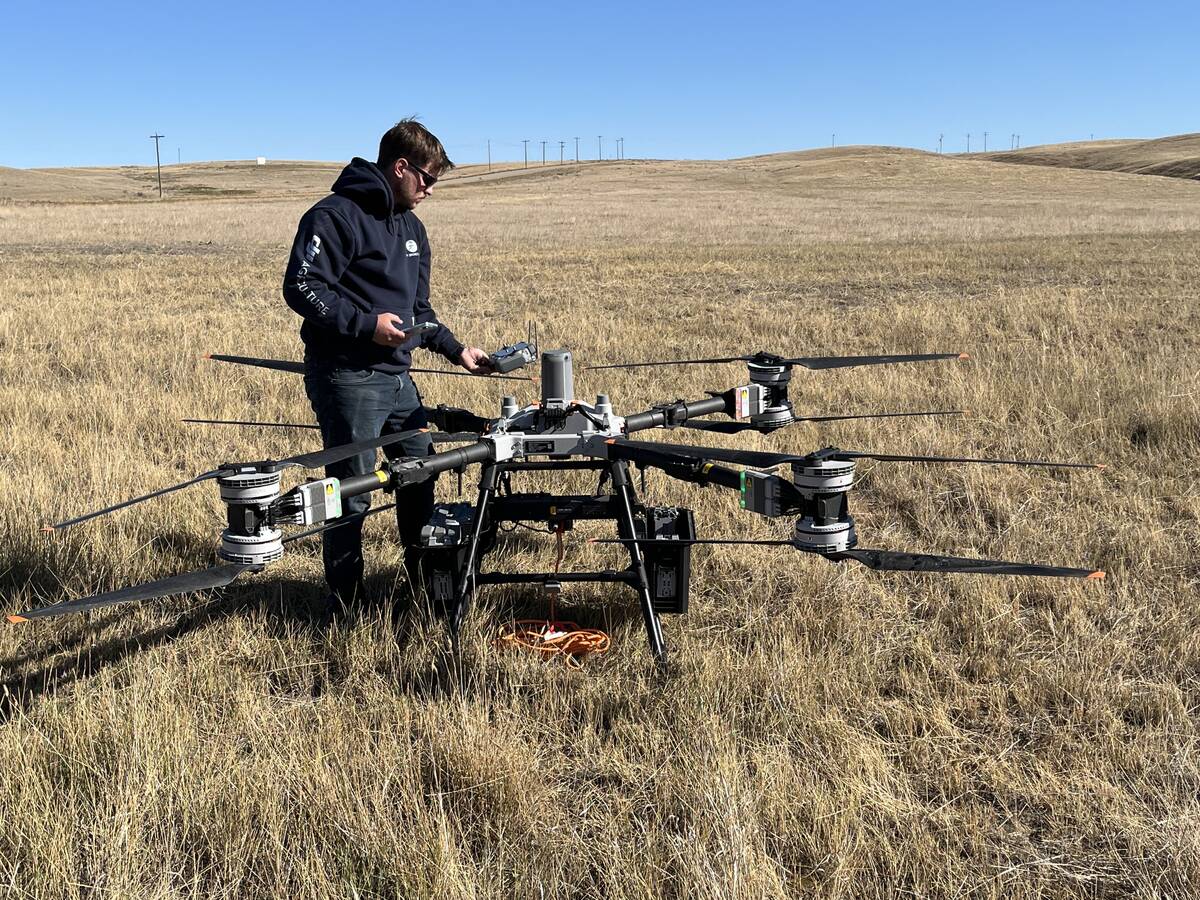The message is clear: two herbicides are no longer viable options in Western Canada. This spring, the Western Grain Elevator Association (WGEA) and the Canola Oilseed Processors Association (COPA) individually announced their members will not accept canola treated with quinclorac or wheat treated with chlormequat in the 2016 crop year.
The decision comes due to marketing challenges to the United States and China respectively.
Chlormequat, a plant growth regulator, has been registered in Canada under trade name Manipulator since 2014. Chlormequat is also registered for use on crops in Europe and Australia, among other wheat-producing countries — but not the United States.
Read Also

Farm-facing drone does the heavy lifting
Canadian distributor DJI Agriculture unveils its AGRAS T100 drone to western Canada’s producers for greater efficiencies in spraying and granular spreading in fields.
The U.S. lacks a Maximum Residue Limit (MRL) for chlormequat, which means zero tolerance by default for even tiny amounts of the growth regulator found in wheat shipments. According to Cam Dahl, president of Cereals Canada, testing technology has advanced to the point that samples can be measured in parts per billion or even parts per trillion.
Dahl says he has no concerns about safety with regard to chlormequat, but marketing has been an issue since the product was introduced in Canada.
“I think it’s important to recognize this is a product that has been registered in the European Union for 30 years,” he says. “It went through the science-based approval process in Canada. It does what it says it should do: in short, it’s an effective and safe product. However, we have those trade concerns because it hasn’t gone through that similar process in the U.S., which means that tolerance is zero.”
Last year, some growers who’d already treated wheat with chlormequat ran into marketing problems at harvest. Dahl says the industry’s attempts to widely publicize issues with chlormequat this spring will hopefully forestall that problem in 2016.
But he says it’s “critical” that producers talk to crop retailers and grain buyers before making the decision to use a particular product, to ensure there are no existing marketing concerns they aren’t aware of.
“It’s a good practice going forward, because the ability to test at such minute levels means this isn’t the last time we’ll see asynchronous approvals like this,” he says.
Cleaver management
When it comes to the herbicide quinclorac, which has been registered for canola in Canada since May 2015, the marketing issues are rooted in China, which does not have an MRL for the herbicide.
According to the Canola Council of Canada, there are four quinclorac-based products in Canada. Great Northern Growers’ Clever is currently on the market. Three other products, including BASF’s Facet and Univar’s Masterline Quinclorac, are not yet commercially available.
“We have a Market Access Committee that contains members from every level of the value chain. In reviewing the risks posed by all chemicals, they’ve determined there is market risk from quinclorac,” says Brian Innes, vice-president of government relations for the Canola Council.
Innes says that at the end of April, quinclorac was prioritized in the codex process for establishing an MRL in China. The process normally takes two years, but the Canola Council has advised sellers of quinclorac products to work on achieving MRL tolerances in markets of interest.
But the Canola Council is not simply focused on marketing. Although its registration only came through in 2015, quinclorac had already emerged as a promising control measure for cleavers. “In 2016, we understand that growers need solutions to manage their cleavers,” says Innes. “We’re working with agronomists and growers to help manage their cleavers while we obtain the certainty in China with respect to quinclorac.”
Ian Epp, an agronomy specialist at the Canola Council based in northern Saskatchewan, says the team is taking a systematic approach to cleavers, looking at how they can be managed in rotation to minimize their impact on canola long-term.
His advice for growers with a history of cleavers in the field is to tackle them early, with a late-season application of glyphosate in the fall.
“Cleavers are one of those weeds where staging is really important,” he says. “Once they get to the eight, 10 or 12 whorl stage they’re very hard to control.”
Epp says the Clearfield system has good control unless producers have resistance, particularly if they have a pulse in the rotation or a history using Group 2s.
Liberty and glyphosate both have good control, he says. “With Liberty you have to spray early, and you have the option of a two-pass at the one-leaf or two-leaf stage, and then later in the season. Spray when it’s hot and humid.”
With glyphosate, Epp says early application is beneficial, and rates should be bumped up when cleavers are a problem.
















